Incredible India - the Pink City of Jaipur
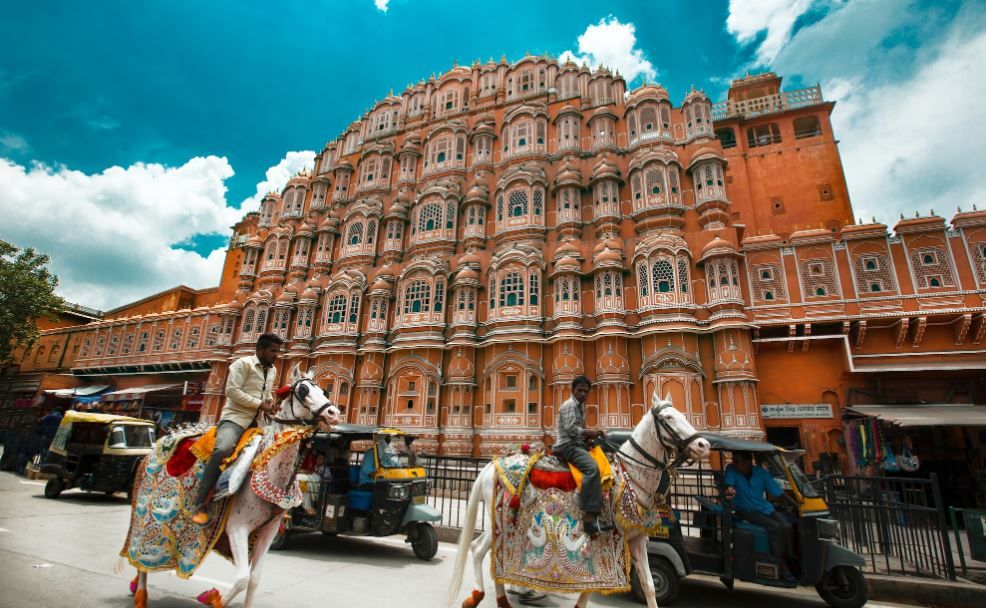
Jaipur, the capital of Rajasthan state, is named after its founder Jai Singh II who came to power at the age of 11. With his grounding in sciences its Northern India’s first planned city with a precise grid pattern built from 1727. In 1876 Maharajah Ram Singh had the entire old city painted pink - the colour of hospitality - to welcome the Prince of Wales (later King Edward VII). Residents of the old city today must preserve the pink facades.
Buses, dawdling camels and elephants share the bustling roads with a myriad of rickshaws and motorbikes, weaving past trucks and buses - usually within inches. Our bus driver had nerves of steel negotiating through the mayhem, as we glimpsed the grandeur of days gone by in this fascinating city.
With the Rajput empire made up of 21 dynasties and 36 royal clans, it’s no wonder we’re told there’s as much history in Rajasthan than the whole of India, far too much to absorb in this 2-week tour!
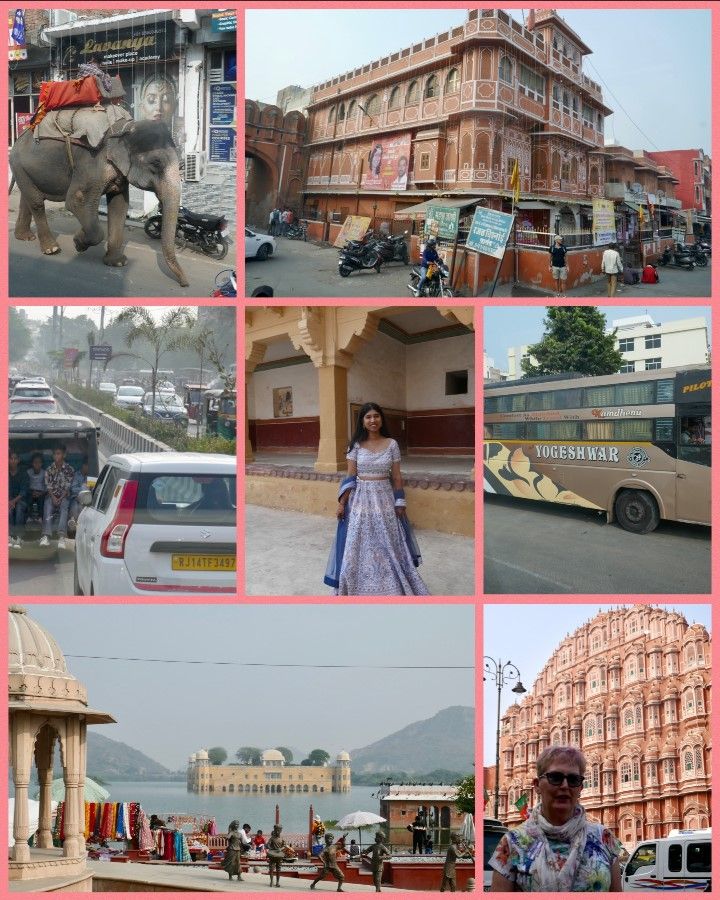
Our one day in Jaipur was filled with wonderfully diverse highlights. After passing Jal Mahal (Water Palace), constructed around 1699 that seems to float on top of Man Sagar Lake, we stopped at Hawa Mahal (known as the Palace of the Winds) -the icon of Jaipur - this 5 storey honeycombed building featuring 953 pink sandstone windows, known as jharokhas from which women of the royal household could discretely watch everyday life of the bazaar below.
Then onto Amer Fort, the ancient capital of Jaipur, one of the finest examples of Rajput architecture, originally built by Raja Man Singh with later additions made by Sawai^ Jai Singh. Once again, a Hall of Public Audience and Hall of Private Audience. Suites for the queens, where the windows have lattice screens - allowing the women privacy to see the proceedings of the royal court.
^Sawai means 1¼ times more intelligent or skilled than a normal person.
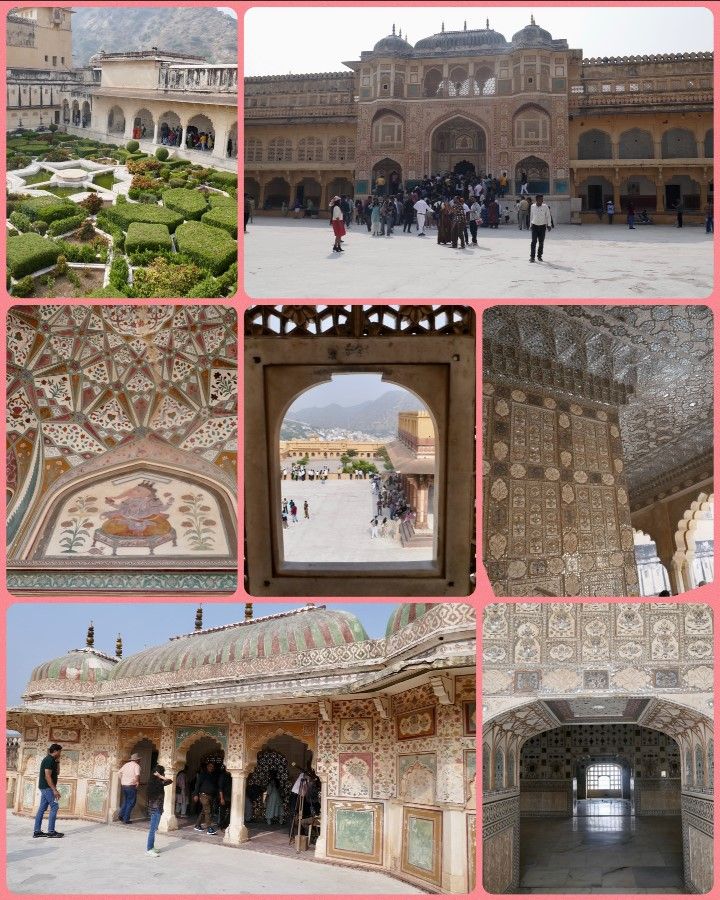
The Jai Mandir or Temple of Victory with its Hall of Mirrors, although larger, rivals the one we saw at Samode Palace.
We spent a ½ day at the Maharaja’s City Palace - which takes up almost 1/7th of the city - a small section still used today by the royal family. Again, an impressive complex of courtyards, gardens and buildings - enlarged over the centuries, resulting in a blend of Rajasthani and Mughal architecture.
This Sawai was invited to the coronation of King Edward VII. He would only bathe and drink the holy waters of the Ganges River. No way was he going to miss the coronation or wash in normal water! So, he commissioned the making of 2 huge pure silver vessels (one shown below), to be filled with Ganges water and transported with him.
Such were the whims of Indian royalty! Said to be the largest of their kind in the world, each vessel weighs 345kgs with a capacity of 2,000 litres.
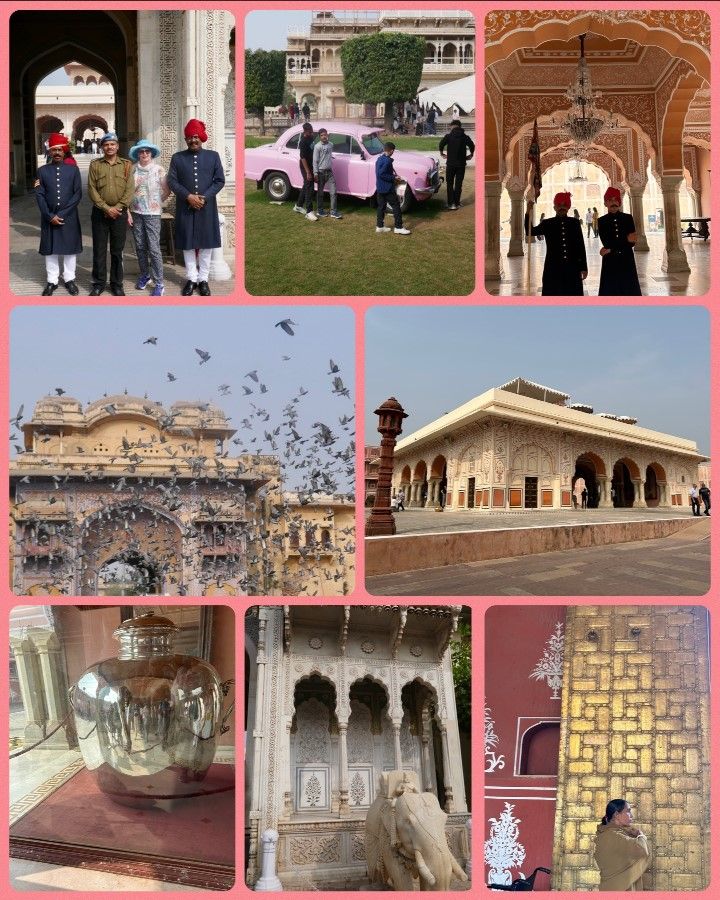
Jantar Mantar, within the grounds of the City Palace, was fascinating - the structures looked so modern, more like a sculpture park.
In fact, it’s an expansive open-air observatory. Jantar Mantar (which means instrument used for calculation), a brilliant astronomical innovation created during the Rajput era.
Maharaja Jai Singh II was a great scholar (and also referred to as a Sawai) with a keen interest in astronomy. He sent scholars to study astronomical achievements in many countries, especially impressed with Ulugh Beg’s observatory built in 1424, which I visited recently in Samarkand, Uzbekistan.
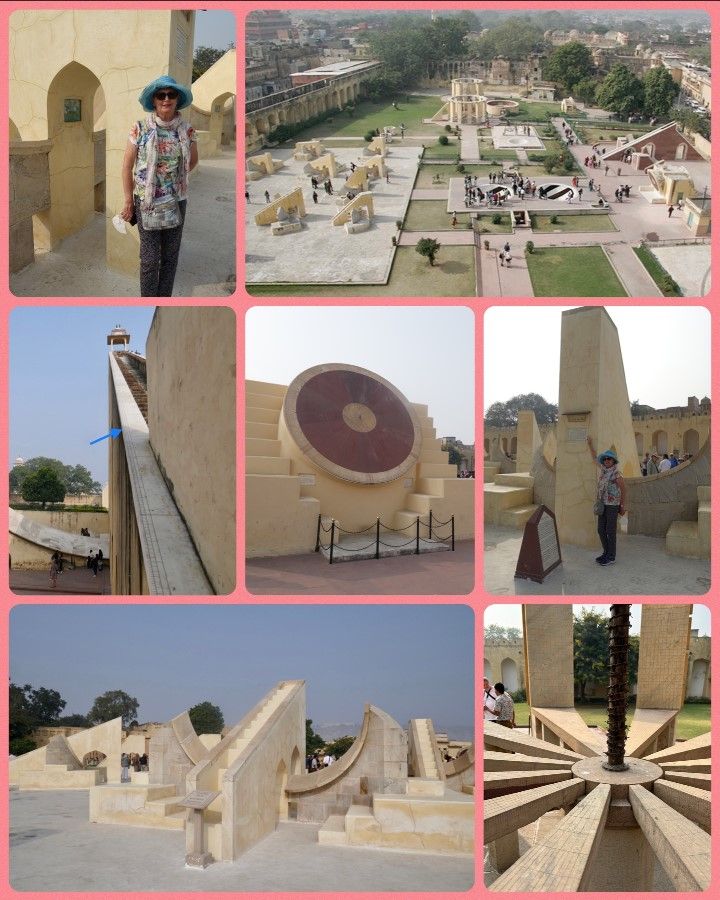
Five Jantar Mantar’s were completed for Jai Singh II in 1734 - one each in New Delhi, Jaipur, Ujjain, Mathura and Varanasi.
The collection of 19 astronomical instruments, constructed out of local stone and marble, measures time of day, distance of heavenly bodies, eclipses and locations of constellations.
The site includes the largest sun dial in the world. One instrument calculates time up to the accuracy of twenty seconds, while another to an accuracy of a mere 2 seconds, quite an achievement in the 18th century! An area covered with angular sculptures determines the locations of our astrological star signs.1
We visited a workshop specialising in the marble inlay work we admired at the Taj Mahal, as well as beautifully woollen and silk rugs.
Demonstrations included how block painting is applied to fabric - a specialty of Rajasthan and how the carpets are made - they use a blow torch on the underside so then the carpet is non slip.
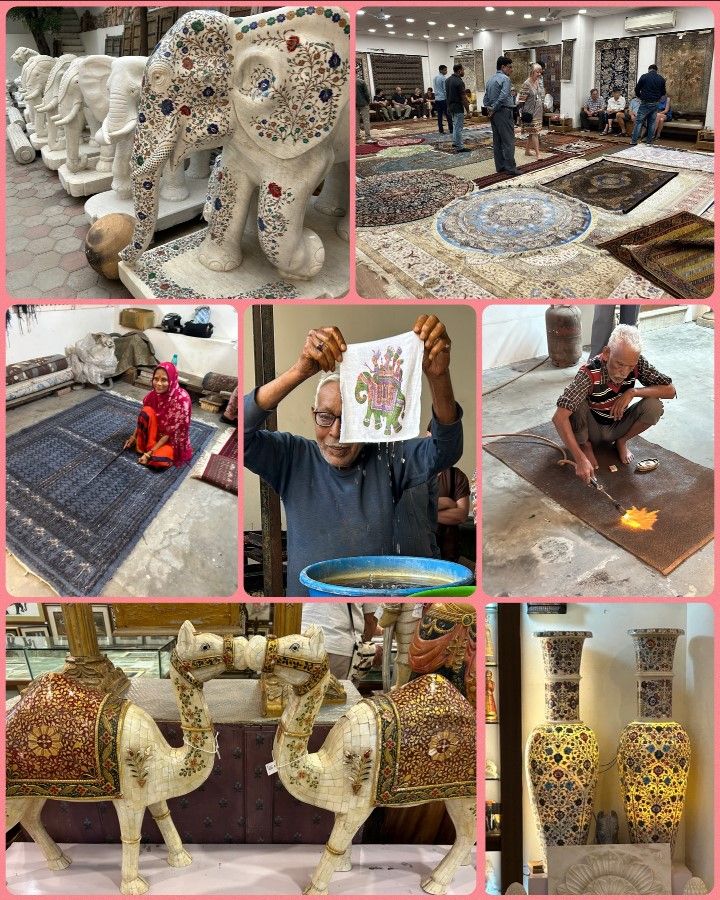
One of our favourite past times was driving or walking through the even bustling streets and meandering in markets - colour at every turn. India continues to be incredible.
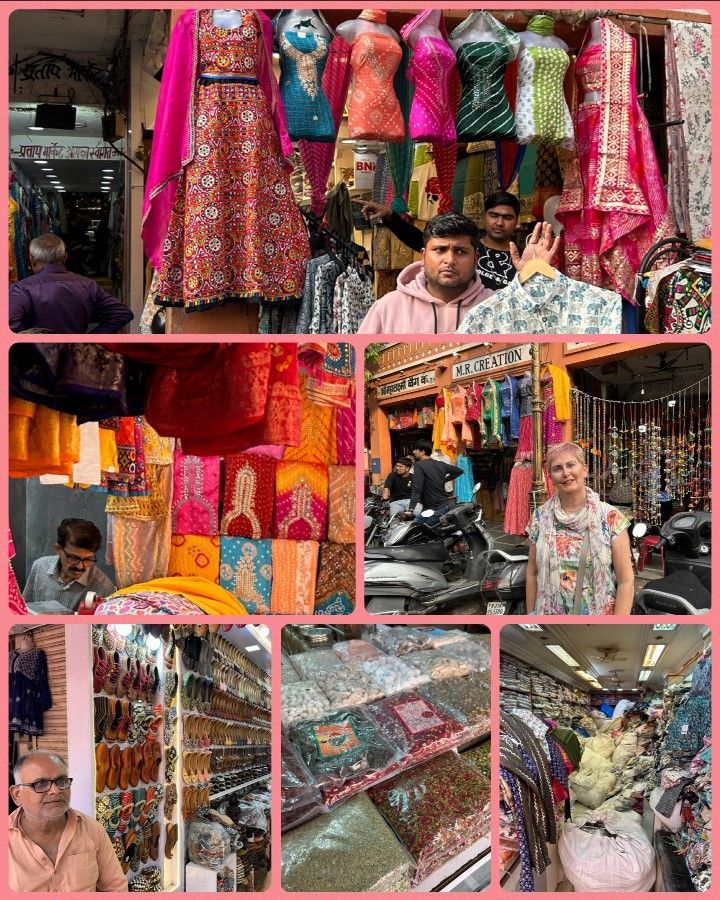
Rajasthan was about to go to the polls & Prime Minister Narendra Modi was in Jaipur. As you can see below, some roads were closed, the city bedecked in orange banners, flags and posters.
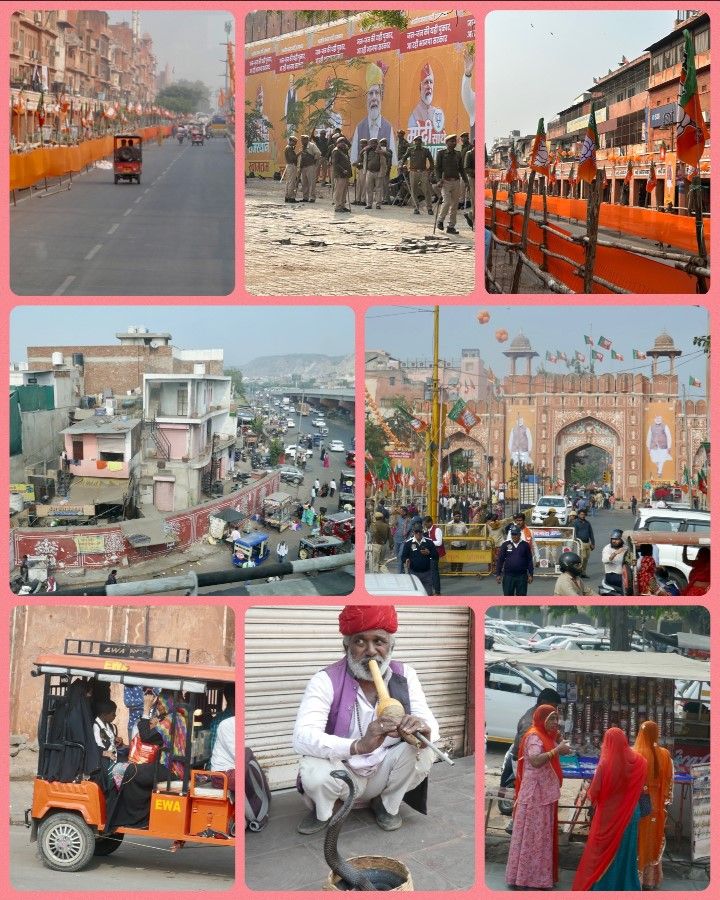
The next city we visited in Rajasthan is Jodhpur - join me tomorrow to find out why it is known as the Blue City.
Credits:
1.jantarmantar.org
